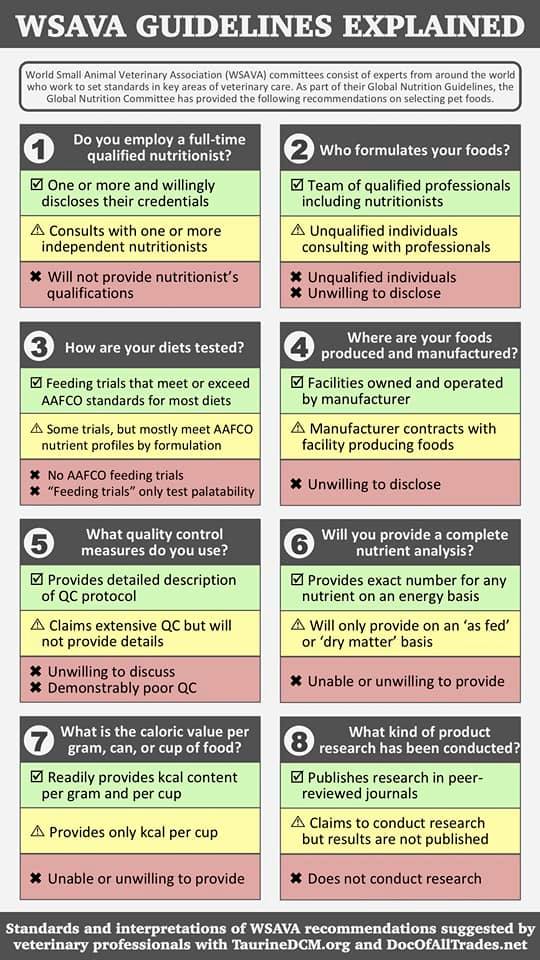
Providing dogs with a nutritionally balanced diet is one of the most important aspects of responsible ownership. With numerous brands, marketing claims, and conflicting opinions, it can be difficult to identify evidence-based options. Scientific principles, rather than trends or advertising language, are essential for making sound nutritional decisions.

Opinions vs. Evidence in Pet Nutrition
Recommendations regarding the “best” dog food frequently conflict due to differing personal experiences and perspectives. While suggestions from acquaintances or online sources may be well-intentioned, they are not a substitute for verifiable scientific evidence.
The pet food industry often employs marketing buzzwords such as natural, holistic, or grain-free to attract consumers. Despite their appeal, these terms mostly function as marketing buzzwords in pet food—and their regulatory meaning varies. They do not guarantee nutritional adequacy, manufacturing quality, or product safety. Relying solely on buzzwords can result in choices influenced more by trends or advertising than by actual nutritional science.
Objective assessment of dog food requires reference to established veterinary nutrition principles and professional guidelines instead of unsubstantiated claims or popular language. This ensures that decisions are based on validated information rather than marketing terminology or anecdotal opinions.
WSAVA Webinar: Pet Food Propaganda and How to Avoid It
The Role of WSAVA in Companion Animal Nutrition
The World Small Animal Veterinary Association (WSAVA) is an international organization that develops and promotes high standards in veterinary medicine, animal welfare, and education. Within WSAVA, the Global Nutrition Committee formulates evidence-based recommendations to improve the nutritional care of dogs and cats worldwide.
These guidelines allow veterinarians and owners to assess whether a diet is developed by qualified professionals, researched appropriately, and manufactured to consistent quality standards.
WSAVA Global Nutrition Committee Guidelines
The WSAVA Global Nutrition Committee develops guidelines that serve as a gold standard for evaluating pet food quality and safety. These recommendations assist veterinarians, their teams, and dog owners in making informed decisions about nutrition. The guidelines are designed to be straightforward and applicable across various diets, including both commercial and alternative formats.
For practical application, the committee suggests verifying key information such as who formulates the diet, the qualifications of staff, research supporting the product, and the company’s transparency regarding nutritional data. Most reputable companies provide this information on their websites or can supply it upon request.
These criteria help users critically assess whether a particular food meets recognized standards. If a diet or manufacturer cannot provide satisfactory answers or meet these benchmarks, its suitability may warrant reconsideration. Meeting WSAVA’s guidelines is a strong starting point when selecting a dog food, as it increases the likelihood the diet will support long-term health.


Brands That Currently Meet WSAVA Criteria
Manufacturers that currently meet these voluntary WSAVA standards include:
- Eukanuba
- Iams
- Purina
- Royal Canin
- Hill’s Science Diet
Note: WSAVA does not endorse or recommend specific products or brands. Compliance indicates that these companies adhere to recognized scientific and manufacturing standards.
Veterinary Involvement in Nutritional Planning
No single diet can be considered the best for all dogs. Nutritional requirements vary based on factors such as:
- age
- breed
- activity level
- health status, and
- body composition.
Veterinarians are best positioned to design an appropriate feeding plan, as they have access to complete medical records and can perform necessary assessments before making recommendations.
Nutrition as the Fifth Vital Assessment
Traditionally, the four main veterinary vital signs are Temperature, Pulse, Respiration, and Pain.
WSAVA adds Nutrition as a fifth vital assessment, incorporating factors such as:
- Species
- Breed
- Sex
- Weight and life stage (puppy, adult, senior)
- Activity level
- Current health status
- Body Condition Score (BCS)
- Muscle Condition Score (MCS)
- Feeding history
This approach allows for individualized dietary planning and more accurate health monitoring.

Conclusion
Selecting the best dog food for your dog is a thoughtful and informed process. Trusting in veterinary organizational consensus provides a reliable foundation, as it reflects a unified agreement among industry experts who pool their collective knowledge to establish guidelines grounded in evidence-based research for the betterment of animal wellness. Applying WSAVA’s science‑based evaluation criteria is a great starting point for assessing nutritional adequacy and product quality. Staying informed and consulting with your veterinarian ensures that dietary choices are tailored to your dog’s individual health requirements.
Nutrition science continues to evolve, which underscores the importance of making decisions based on verified evidence rather than marketing claims or anecdotal opinions.
Synergistically Yours
Danielle & Sheepdog Riggs
forever in our hearts
Did you find this information helpful? Do you enjoy my content or learn something new? Consider showing your support by buying me a coffee.
Has your dog been affected by Canine Copper-Associated Hepatopathy? Please see our Members Page.
Are you in need of a Veterinarian right now? Vetster is 24/7 on demand online veterinary virtual appointments. Search by location, availability, species, vet profile, treatment and more. Connect with a licensed veterinarian in minutes from the comfort of your own home.



